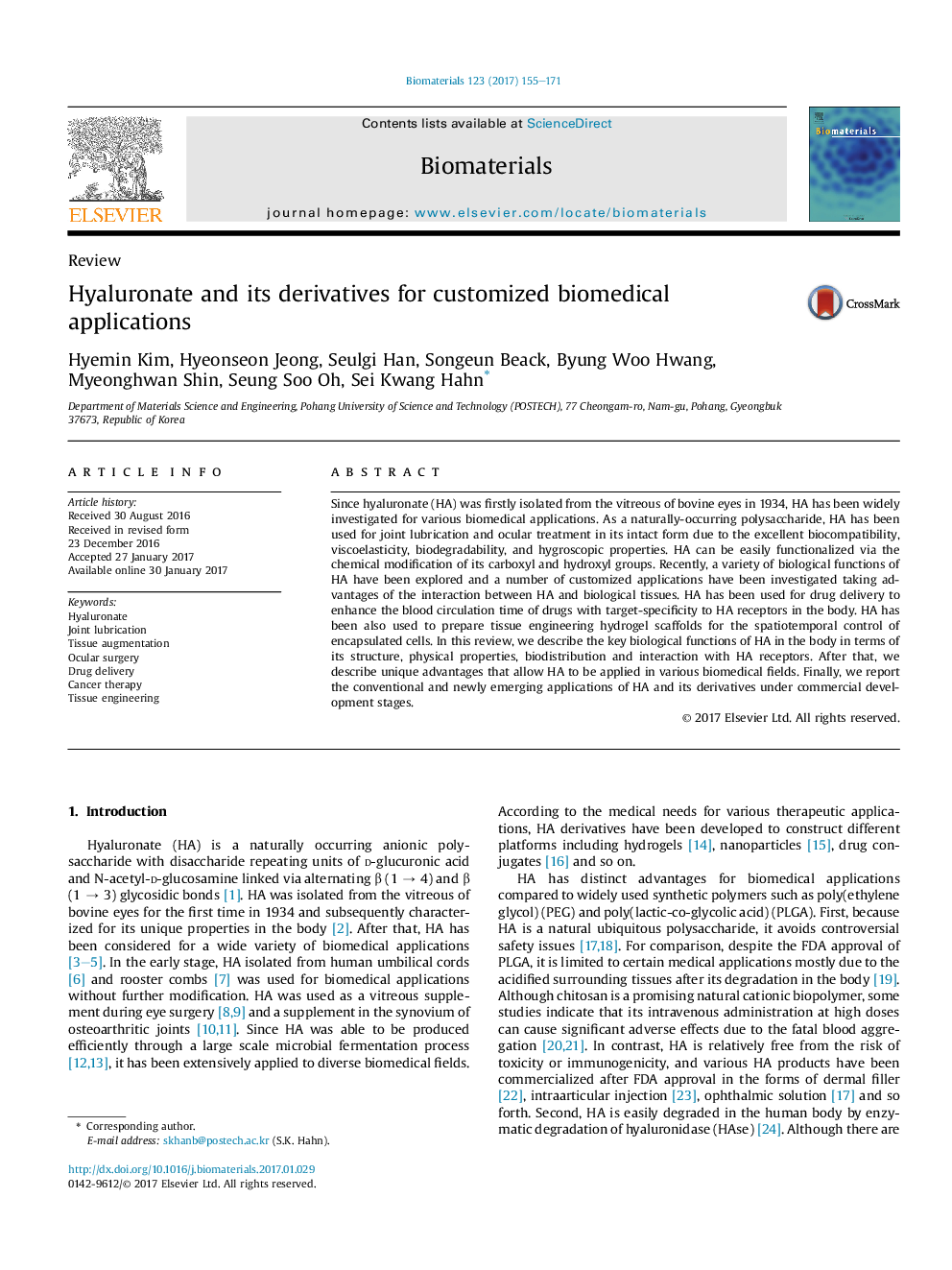| Article ID | Journal | Published Year | Pages | File Type |
|---|---|---|---|---|
| 4752441 | Biomaterials | 2017 | 17 Pages |
Abstract
Since hyaluronate (HA) was firstly isolated from the vitreous of bovine eyes in 1934, HA has been widely investigated for various biomedical applications. As a naturally-occurring polysaccharide, HA has been used for joint lubrication and ocular treatment in its intact form due to the excellent biocompatibility, viscoelasticity, biodegradability, and hygroscopic properties. HA can be easily functionalized via the chemical modification of its carboxyl and hydroxyl groups. Recently, a variety of biological functions of HA have been explored and a number of customized applications have been investigated taking advantages of the interaction between HA and biological tissues. HA has been used for drug delivery to enhance the blood circulation time of drugs with target-specificity to HA receptors in the body. HA has been also used to prepare tissue engineering hydrogel scaffolds for the spatiotemporal control of encapsulated cells. In this review, we describe the key biological functions of HA in the body in terms of its structure, physical properties, biodistribution and interaction with HA receptors. After that, we describe unique advantages that allow HA to be applied in various biomedical fields. Finally, we report the conventional and newly emerging applications of HA and its derivatives under commercial development stages.
Related Topics
Physical Sciences and Engineering
Chemical Engineering
Bioengineering
Authors
Hyemin Kim, Hyeonseon Jeong, Seulgi Han, Songeun Beack, Byung Woo Hwang, Myeonghwan Shin, Seung Soo Oh, Sei Kwang Hahn,
